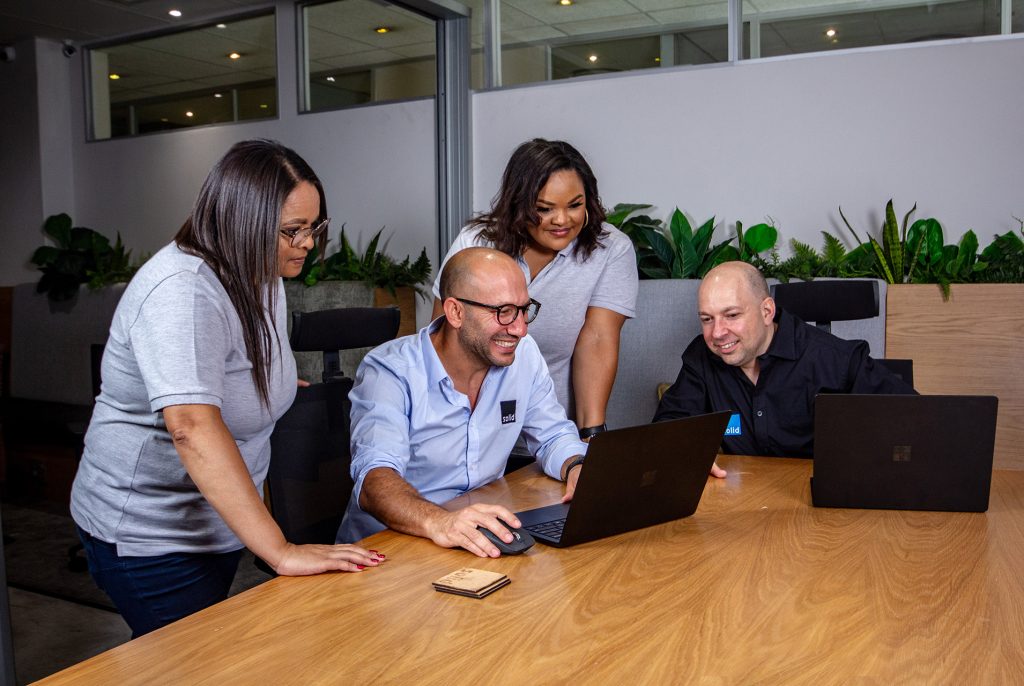
It is impossible to operate a business in today’s modern world without taking security concerns into consideration. Cybersecurity in particular is becoming ever more important as businesses around the world are adopting new technologies, using advanced tools to process and analyse their data, and storing critical information in the cloud. While these technologies, tools and cloud services are exceedingly valuable in helping businesses to adapt and grow, they can also be susceptible to cyberattacks if they aren’t effectively secured and maintained.
This is why it’s critical that your business take the time to conduct a regular IT security audit, to ensure that your systems are up-to-date, are configured according to industry best practices, aren’t vulnerable to attack, that you are using the best possible solutions for your needs, and that you’re doing everything you can to protect your operations and your data.
What Is An IT Security Audit?
An IT security audit is a comprehensive evaluation of a business’ information technology infrastructure, policies, procedures, and controls. It aims to identify potential vulnerabilities and risks that could compromise the confidentiality, integrity, and availability of critical business data.
At Solid Systems, security audits are part and parcel of our larger Solid Systems Reviews. These comprehensive IT audits look at your technology solutions as a whole, alongside your business goals and objectives, and evaluate the state of your IT and its security.
Why Are Security Audits Important?
Cybersecurity threats are constantly evolving, and no business is completely immune to attacks. With cyberattacks becoming more sophisticated, attackers are finding new vulnerabilities to exploit on a daily basis, making it critical that businesses review their security protocols, identify vulnerabilities within their systems, and address them on a regular basis, before they can be exploited by cybercriminals.
On top of protecting your systems, an IT security audit can also help you to categorise your data, prioritising the protection of critical information, and ensuring that you effectively secure personal information in particular to stay compliant with regulations like South Africa’s POPI Act or the EU’s GDPR. This will not only boost your reputation as a reliable and responsible partner for your clients, but will see you avoiding fines associated with contravening those regulations as well – a win-win if ever there was one!
It’s also crucially important that businesses in today’s modern world document not only their processes, but the systems and technologies that they’re using. All too often, information that is critical to your operations sits with a single person who is responsible for managing your processes. For example, your company may have a high-level IT person who makes sure that your technologies are working effectively and that your operations are running smoothly. But what would happen if that person left your business? Or if they were injured and couldn’t work? It’s important that you have a thorough understanding not only of their responsibilities, but are able to access the tools and platforms that they use, and this is where documentation can be an invaluable asset to your company’s operations.
What Are The Benefits Of An IT Security Audit?
An IT security audit has numerous benefits for businesses of all sizes, from small startups to large corporations. These benefits include:
• Becoming Proactive
Regular security audits empower businesses to adopt a proactive approach towards their cybersecurity, instead of a reactive one. Instead of waiting for a security or data breach to occur and then taking remedial measures, you can identify potential vulnerabilities and threats in advance and take the necessary steps to prevent breaches from happening. This forward-thinking approach significantly reduces the risks of data breaches and other cyber threats, saving your business from potential financial losses, reputational damage, and regulatory penalties that may arise from cybersecurity incidents.
• Identifying Critical Data
During the process of an IT security audit, all your business’ essential data assets, which could range from sensitive customer information to proprietary business data, are identified and assessed for potential vulnerabilities. This helps you to understand which data is most at risk and allows you to prioritise your security efforts towards protecting this data. It also aids in developing robust data handling practices that ensure the confidentiality, integrity, and accessibility of this vital information, significantly reducing the risk of data loss or breaches.
• Improving Efficiency
Security audits can also identify areas where your company’s technology is underperforming or causing inefficiencies. By analysing your tech stack and putting together a strategic technology roadmap, an IT security audit can help streamline your processes and improve overall efficiency. This not only saves time and resources, but also enhances the productivity of your team.
• Enhancing Reputation
By regularly conducting IT audits and proactively addressing any vulnerabilities, you demonstrate a commitment to protecting your customers’ data and maintaining the integrity of your systems. This not only keeps you competitive in a fast-paced digital world, but helps build a strong reputation for your business and fosters trust with both customers and stakeholders.
How Do Security Audits Work?

When you work with Solid Systems, you get more than just a standard IT security audit. Our Solid Systems Review is a tried and tested process which helps you to get a full understanding of your technologies and their security, and help your business to implement the right solutions that are going to see you exceeding your goals. Let’s take a quick look at what the reviews involve:
• Performing A Risk Analysis
The first step involves conducting a risk analysis to identify any potential vulnerabilities in your systems. This includes evaluating the level of risk associated with different types of data, networks, and apps, as well as assessing your overall security posture. We compare your infrastructure’s security to best practices and industry standards to gain a thorough understanding of where your security can be improved.
• Putting Together Documentation
Once we have completed our risk analysis, we create a comprehensive breakdown of all your systems along with the vulnerabilities that we’ve identified and our recommendations for improvement. This documentation serves as a detailed record of your core infrastructure, the apps and services that you use, how to access them, and your general security status to help you manage your systems and their security more effectively.
• Creating A Strategic Technology Roadmap
Based on our risk analysis and documentation, we work with you to create a strategic technology roadmap that outlines the steps needed to improve your overall IT security. This not only includes prioritising risks and vulnerabilities and identifying the most effective solutions for your immediate needs, but guides your future technology investments as well, helping you to grow your business and implement new technologies, all while sticking to your IT budget.
• Performing A Tech Stack Audit
Next up, we take a close look at your tech stack, assessing it against our Solid Certified Standard to make sure that your business is meeting industry-leading benchmarks, while still addressing the unique scale and needs of your business.
• Putting Together A Formal Report
Once your IT security audit is complete, we put together a formal report, summarising our findings and recommendations. This report is designed for both technical and non-technical stakeholders, providing an overview of your current security status, what we found during the audit, and our recommended path forward to help improve your IT security.
• Presenting Our Findings
Finally, we present our findings to you in person or in a video call. We will walk you through our report, highlighting any major risks or vulnerabilities that were identified, and discussing potential solutions and strategies to address them. This is also an opportunity for you to ask questions and gain a deeper understanding of your current security posture, as well as the steps needed to improve it.
What Are The Different Types Of Security Audits?
No two businesses are the same, so why would they have the same needs from an IT security audit? We’ve put together three different Solid Systems Reviews that cater to a wide range of business needs, company sizes and technology types:
• Basic Audit
A basic audit is an entry-level assessment that provides a broad overview of your business’ security posture. It looks at your email security and your cloud backup status and policies, and at the end of it all, you’ll come out with an actionable IT roadmap that will guide your technology decisions, whether you choose to work with Solid Systems for your managed IT services needs or not.
• Microsoft 365 Audit
At SOLID, we like to think of ourselves as being Microsoft hyper-focused, which makes us the perfect partner to conduct Microsoft 365 system reviews. This kind of IT security audit not only analyses any gaps in your Microsoft security and reviews your Endpoint protection, but it can also help you to optimise your Microsoft spend and improve app adoption throughout your business.
• Standard Audit
The Standard Solid Systems Review is our most comprehensive IT security audit. It covers everything from your email security and data protection, to user permissions and policies through Identity and Access Management (IAM), to disaster recovery planning and comprehensive system documentation. We dive deep into your tech stack to identify any areas of weakness or potential risks, as well as providing strategic recommendations for improvement. This type of audit is suitable for businesses who are serious about their cyber security and want to ensure they have a solid foundation in place.
How Often Should You Conduct IT Security Audits?
There is no one-size-fits-all answer to this question, since the frequency of security audits will depend on various factors such as the type and size of your business, industry regulations, and changes in technology. Generally, it is recommended to conduct at least one audit per year, but more frequent audits may be necessary for businesses with sensitive data or those in highly regulated industries. It is also important to conduct an audit whenever there are major changes to your IT infrastructure or significant security incidents.
Areas That You Should Include On Your IT Security Audit Checklist
When conducting an IT security audit, it is essential to cover a wide range of areas to ensure comprehensive security. Some key areas that should be included on your checklist are:
• Data Security
This includes assessing the security measures in place for protecting sensitive data, such as encryption methods, access controls like Multi-Factor Authentication (MFA), and backup procedures.
• Network Security
A thorough review of your network infrastructure is crucial to identifying any vulnerabilities or weaknesses that could lead to cyberattacks, especially if you embrace remote or hybrid work environments that see your humans accessing your network from their homes.
• App Security
With the increasing use of mobile and web apps, it is crucial to assess the security measures in place for protecting these apps from cyber threats. This is also where having a Cloud Access Security Broker can be essential in minimising the risks posed by shadow IT – where your teams are using apps that you don’t even know about to process company data.
• User Security
The human element is often the weakest link in IT security. This is why it’s important to include user awareness training and policies in your audit checklist.
Tips For A Successful IT Security Audit

To get the most out of your IT security audit, here are some tips to keep in mind:
• Understanding The Scope
Clearly define the scope and objectives of your audit. This will help you focus on the areas that need the most attention and avoid wasting resources.
• Involving Relevant Team Members
Make sure to involve key stakeholders from different departments in the audit process. This will not only provide a more comprehensive understanding of your IT landscape but also help identify potential risks and vulnerabilities that may have been overlooked.
• Using A Reliable Technology Partner
Consider working with a reliable technology partner to conduct your IT security audit. They can bring in their expertise, experience, and tools to ensure a thorough and unbiased assessment of your IT infrastructure.
• Getting Detailed Documentation
You’ll want to be sure that at the end of your IT security audit, you’ll have documentation like network diagrams, system configurations, and security policies. This will help you to get a better understanding of your systems, identify potential gaps, and ensure business continuity if critical team members leave your business.
• Prioritising Risks And Vulnerabilities
The audit report may uncover several risks and vulnerabilities in your IT infrastructure. It is important to prioritise them based on their severity and potential impact on your business. This will help you to allocate resources and address the most critical issues first.
How Can Solid Systems Help?
For over 21 years, Solid Systems has been helping businesses to get a greater understanding of their technologies, implement the right solutions that will help them to grow, and enhance their cybersecurity in an ever-evolving world. Our Solid Systems Reviews are the foundation for this progress, and the starting point for a strong and long-lasting technology partnership.
If you are looking for a company to conduct more than just a standard IT security audit, but to gain a deep understanding of your unique needs and goals, and help you to protect your business against a wide range of threats, then you’ve come to the right place. Book a Systems Review Discovery session with our Sales team today, and let’s see you securing your systems, preparing for any scenario, and stepping into the future with confidence.
Frequently Asked Questions
A Solid Systems Review is our unique, tried and tested approach to an IT security audit. It goes beyond just making sure that your systems and technologies are secure, but extends to ensuring that they’re adding value to your business, that they’re being adopted in the right way, and that they are configured according to both industry standards and our Solid Certified Standard as well.
The cost of an IT security audit varies greatly, influenced by factors such as the size and complexity of your IT infrastructure, the levels of security required, and the audit’s scope. For a definitive quote, it’s best to consult with a professional IT services provider like Solid Systems. We aim to offer competitive and value-driven pricing, ensuring you gain a comprehensive understanding of your technologies and their security profiles.
The key elements of an IT security audit include identifying potential risks and vulnerabilities, evaluating current security policies and controls, assessing physical and environmental security, testing system access and data integrity, and finally, compiling and presenting a detailed report with strategies for risk mitigation and future improvement.
An IT audit begins with a comprehensive risk analysis to understand potential threats. Documentation is then assembled, providing a detailed snapshot of the current IT landscape. A strategic technology roadmap is next, outlining tech upgrades and processes. A tech stack audit follows, evaluating all software and hardware in use. Lastly, a formal report is compiled and findings are presented to stakeholders.
Popular Searches
- Internal IT Threats
- Cybersecurity Gaps
- Advantages of Cloud Infrastructure
- Importance of IT Security
- SharePoint Space
- History of Microsoft
- Threats in Network Security
- Types of Cyber Attacks
- Cloud Security Best Practices
- 6 Risk Mitigation Strategies
- What is Iaas
- Audit and Compliance
- Cyber Security Documentation





